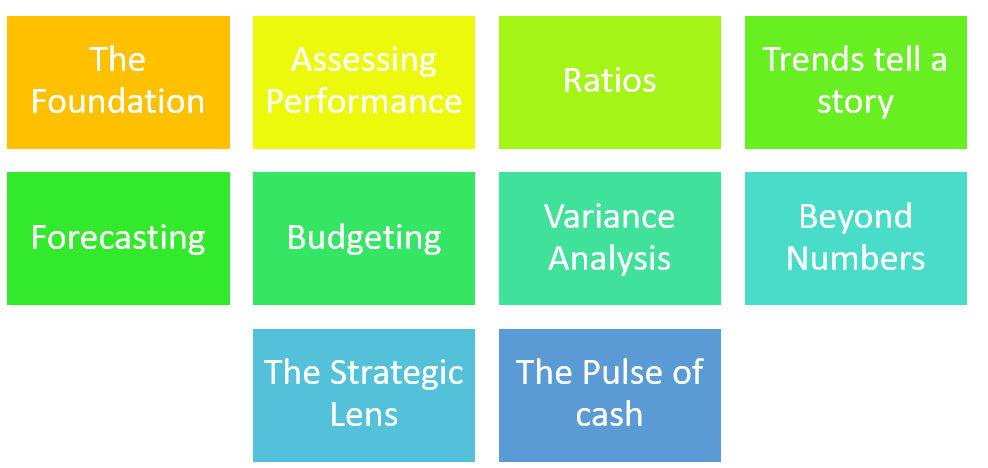As a business professional, you’re equipped with a vast toolkit of knowledge to navigate the complex world of business. One essential tool in your arsenal is financial analysis—a key practice that allows you to unlock valuable insights about the financial health and performance of organizations. In this blog post, we’ll explore the significance of financial analysis, its various aspects, and how you can apply it effectively throughout your career.

1. The Foundation: Understanding Financial Analysis
The financial analysis serves as a compass, guiding decision-making processes within an organization. By examining financial statements, ratios, and metrics, you can gain a comprehensive understanding of an organization’s financial landscape.
2. Assessing Performance: Delving into Financial Statements
Financial statements provide a snapshot of an organization’s financial performance, position, and cash flow. Dive into the three primary statements, the balance sheet, income statement, and cash flow statement, and uncover the valuable information they hold.
3. Ratios: The Key to Unlocking Insights
Ratios act as the interpreter of financial statements, offering deeper insights into an organization’s financial performance. Explore crucial ratios such as liquidity ratios, profitability ratios, and solvency ratios. Learn how to calculate and interpret these ratios to gauge an organization’s efficiency, profitability, and financial stability.
4. Trends Tell a Story: The Power of Trend Analysis
Spotting trends within financial statements is an art that can provide invaluable foresight. Learn to identify and analyze trends over multiple periods to gain insights into an organization’s historical performance and make informed predictions about its future.
5. Forecasting: Peering into the Crystal Ball
Forecasting is an essential skill for Business professionals. Discover the different methods of financial forecasting, from quantitative techniques to qualitative judgment. Understand how accurate financial forecasts support budgeting, planning, and strategic decision-making.
6. Budgeting: The Roadmap to Success
Budgeting is the bedrock of financial management, ensuring the organization’s resources are allocated effectively. Explore the budgeting process, different types of budgets, and the critical role they play in aligning financial goals with overall organizational objectives.
7. Variance Analysis: Navigating the Unexpected
Variance analysis helps bridge the gap between planned and actual performance. Learn to analyze and interpret variances, both favorable and unfavorable, to identify areas for improvement, understand performance deviations, and make data-driven decisions.
8. Beyond the Numbers: The Art of Cost Analysis
Cost analysis goes beyond mere numbers—it enables you to optimize resource allocation, understand the cost structure, and make informed pricing decisions. Delve into methodologies such as cost-volume-profit analysis, activity-based costing, and cost variance analysis.
9. The Strategic Lens: Financial Analysis in Decision-Making
Financial analysis plays a crucial role in various decision-making scenarios. Discover how financial ratios can aid in investment appraisal, financial viability assessment, and evaluating potential mergers or acquisitions. Learn to apply the right ratios in different contexts to make sound strategic choices.
10. The Pulse of Cash: Analyzing Cash Flow
Cash flow analysis provides insights into an organization’s liquidity and cash management. Uncover the importance of analyzing cash flow statements and explore metrics such as operating cash flow, investing cash flow, and financing cash flow. Master the art of cash flow analysis to ensure sustainable financial health.
Conclusion:
As you embark on your Business professional journey, financial analysis will be your trusted ally. From examining financial statements to deciphering ratios, trends, and variances, this indispensable practice enables you to evaluate an organization’s financial health and make sound decisions. Embrace the power of financial analysis, hone your skills, and apply them throughout your career to unlock the potential of the numbers that shape the business world.
Remember, financial analysis is not just about crunching numbers—it’s about translating them into strategic insights and actions. By mastering this art, you’ll enhance your value as a Business professional and contribute to the success of organizations in today’s dynamic business landscape.
One thought on “Unveiling the Numbers: The Power of Financial Analysis in Evaluating Organizational Health”